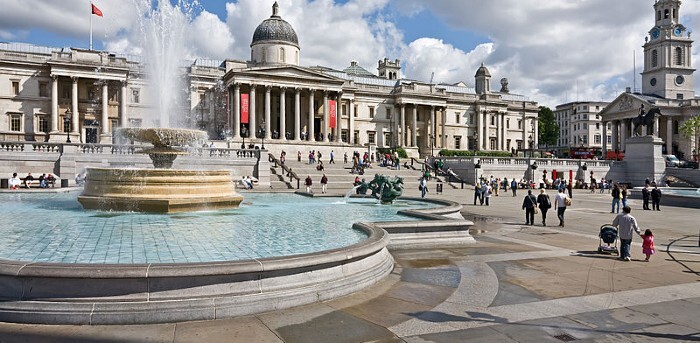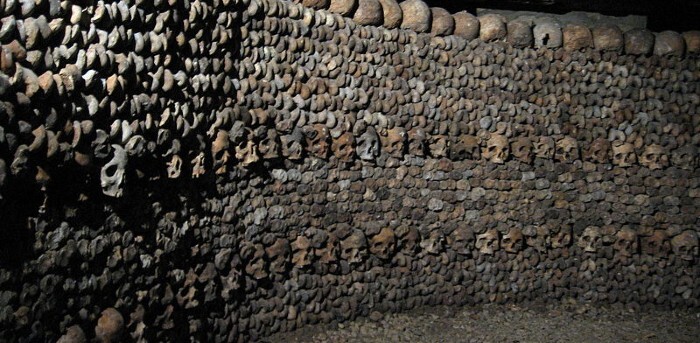15 Bizarro Secrets of Famous Landmarks

If you’ve done a fair bit of traveling, you might think you’ve seen it all, but wander away from the tour group and you might find a part of history you -- or maybe anyone else -- never knew existed. One wrong turn can land you in a magical world of celebrity secrets or a haunted cave, so watch your step.
Mount Rushmore’s Hall of Records

The designer of Mount Rushmore envisioned a secret room containing the most important documents of American history, and he kind of got it. Behind Lincoln’s head, there’s a granite slab covering a titanium vault containing a teakwood box holding 16 mysterious porcelain tablets. They really wanna keep Nic Cage outta there.
Niagara Falls’ Cursed Cave

A limestone cave hidden in Niagara Falls is said to be the subject of a Native American legend promising misfortune to anyone who enters, but they probably just wanted white people to stay out of their cave.
The Da Vinci Statue Hidden Parchments
In 1960, a huge statue of Leonardo Da Vinci was erected at the airport in Rome, and it took 46 years for people to realize it had a secret hatch that contained two pristine sheets of parchment. Unfortunately, they weren’t valuable schematics by the O.G. renaissance man, just a history of the airport’s land and a list of people who were there when the statue was unveiled.
Buckingham Palace’s Secret Passages

The Queen’s former house is lousy with hidden hallways so she could “make an entrance” straight from her apartments to her guests waiting in the music hall without being seen, because it’s hard to be worshiped for the better part of a century without developing a dramatic streak.
The Statue of Liberty’s Torch Room

Lady Liberty’s torch contains a whole room that the military used to open up to give its fanciest guests an unbeatable view of the New York City skyline, but the Black Tom explosion ruined a lot of things, including the torch room.
Trafalgar Square’s Tiny Police Station

An ornate but otherwise unremarkable light fixture in Trafalgar Square hides what used to Britain’s smallest police station, a two-man chamber with small windows for an officer to keep an eye on troublemakers and a phone that connected to Scotland Yard and flashed the light on top, somewhat defeating the purpose of a concealed police station. Now they use it to store cleaning supplies, which are arguably more useful.
Grand Central Station’s Tennis Courts

Those who know where to find them can pass the time between Amtraks doing a Venus and Serena on the tennis courts at Grand Central Station. They were once exclusively reserved for wealthy travelers, but now, it’s run entirely on dibs, just as the founding fathers intended.
The Supreme Court’s Basketball Court
The fifth floor of the U.S. Supreme Court is home to a gym complete with a small basketball court, known delightfully as “the Highest Court in the Land.” Unfortunately, it’s strictly off-limits to anyone who doesn’t work for the court, even if Elena Kagan accepts your challenge to a dunk-off.
The Frick Collection Bowling Alley
You won’t find a lot of places stuffier than the Frick Collection, housed in the former New York City mansion of industrialist Henry Clay Frick, which is why one of the best things it could hide is a bowling alley and pool hall. Make no mistake, this is one fancy bowling alley, with “the latest in ball return technology” and “advanced composite rubber” balls, but not being open to the public, very few games have been played there. This feels like a metaphor.
The Brooklyn Bridge’s Wine Cellars

To make up the cost of construction in storage fees and appease businesses in the way, which both happened to be in the goof juice industry, the designers of the Brooklyn Bridge built wine cellars underneath to offer unique storage space. It doesn’t seem like the most convenient option, but the wine kept there was apparently good enough to climb under a bridge for.
The 103rd Floor of the Empire State Building
Most people think the Empire State Building has 102 floors, but the most special visitors are taken to 103rd “floor’s” private deck, which is really just a trench around the spire. Don’t be too jealous: From the knee up, there’s nothing between you and the New York City skyline, so it would probably take about three seconds for you to start whimpering at them to take you back to safety.
The Train Tracks Under the Waldorf Astoria
The designers of the Waldorf Astoria built train tracks underneath the hotel so its famous guests could slide in sight unseen, but they haven’t seen much use in the last half-century or so. Nobody uses the train for anything except tennis anymore.
The Capitol’s Souvenir Flagpoles

If you’re that kind of nerd, you can buy a flag that’s been flown over the Capitol, but there’s a catch: It will only fly for about 30 seconds on one of the building’s three tiny flagpoles that are there specifically for the purpose of flying your bullshit flag. Maybe consider a key chain.
The Time Capsule in the Gateway Arch

When the Gateway Arch was built in St. Louis in the ‘60s, a time capsule was welded into the top, though it only contained the signature of a few thousand residents. The whole thing feels very St. Louis.
The Catacombs Theater

In 2004, Paris police discovered a fully functioning movie theater and bar within a booby-trapped and previously thought unexplored section of the catacombs, complete with electricity, three phone lines, and a 20-person seating pit. Three days later, they came back to find everything gone, replaced by a note instructing police to “not search” for them. It turned out to be way less sinister than it sounds: It was the work of a group of merry pranksters that has been going around restoring and building cool stuff all over the city since the ‘80s. Think of it as vandalism for good.
Top image: Laurenz Heymann/Unsplash